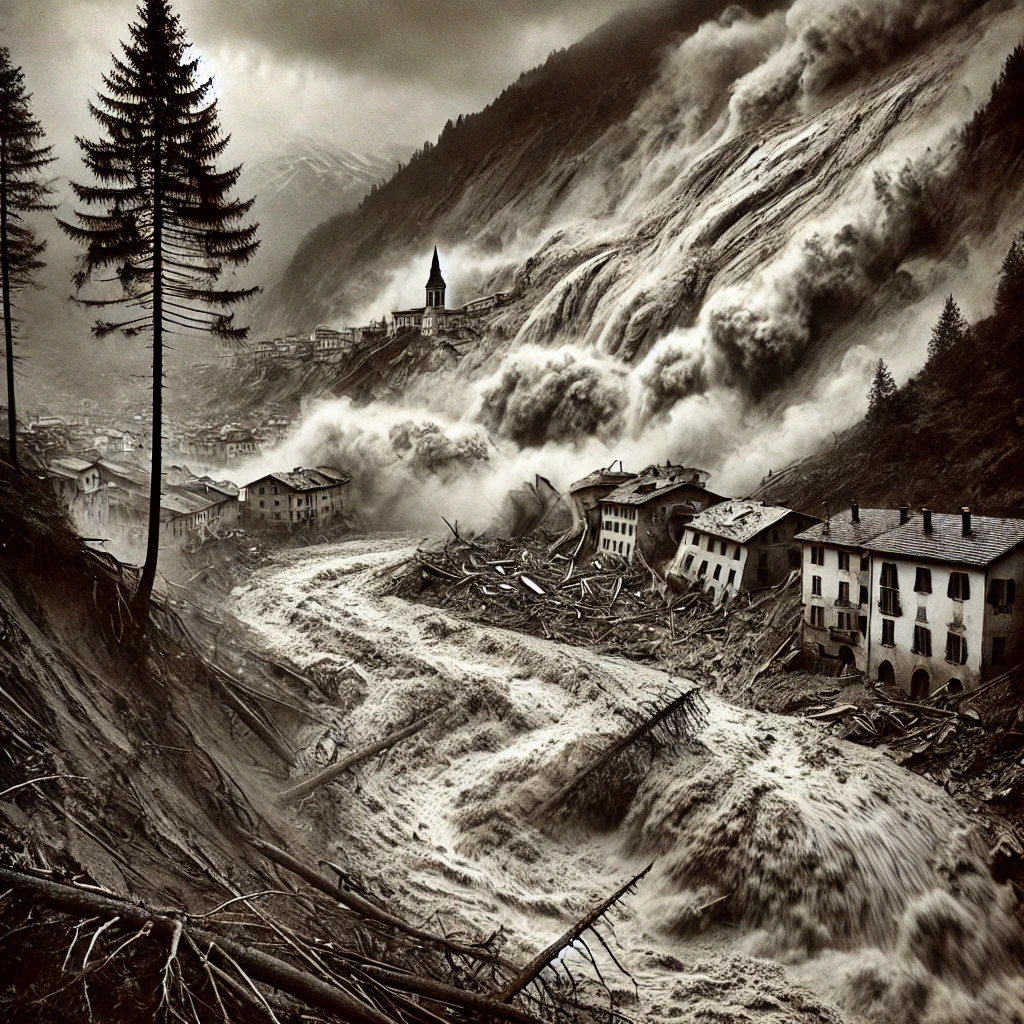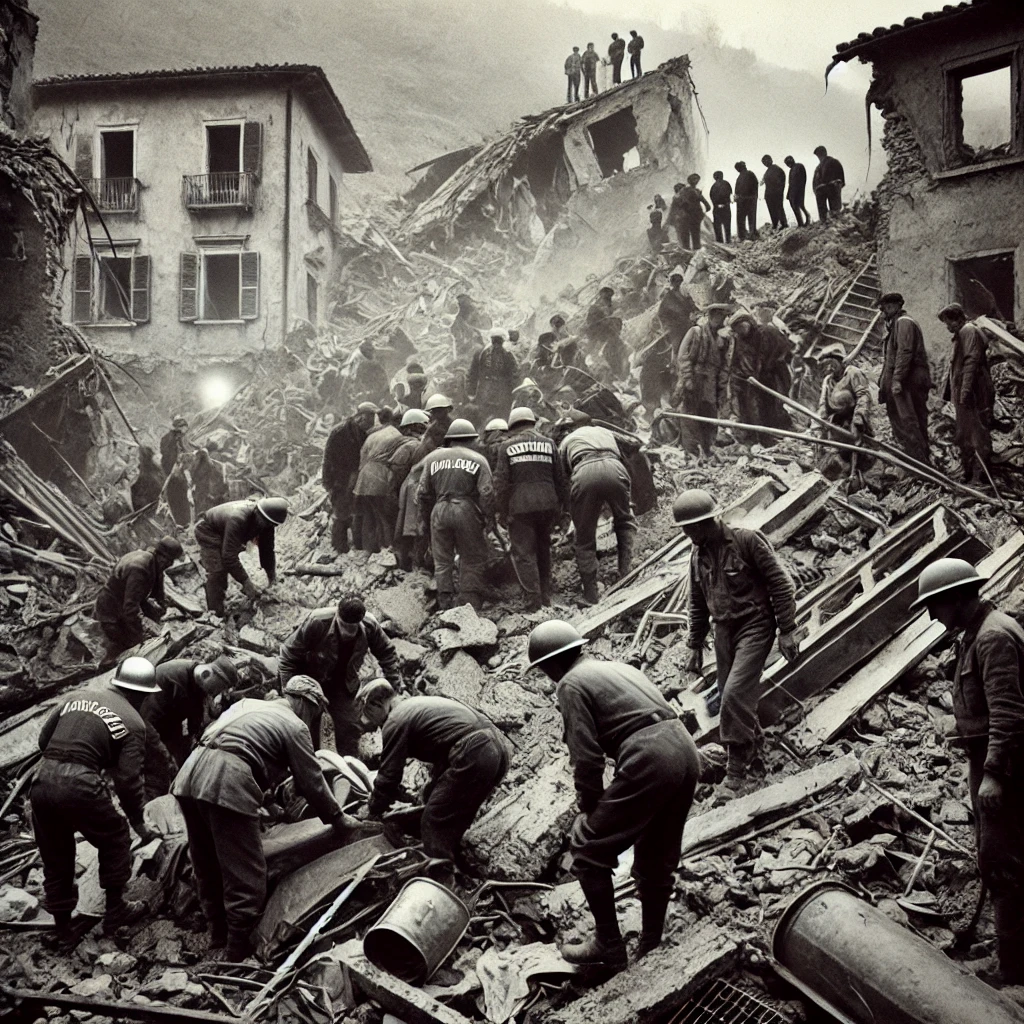On October 9, 1963, a catastrophic landslide struck the small town of Longarone in northern Italy, resulting in one of the deadliest natural disasters in the country’s history. The landslide, triggered by heavy rainfall and geological instability, unleashed a massive wave of mud and debris that swept through the region, leading to the destruction of homes and the loss of thousands of lives. This tragedy not only devastated the local community but also raised crucial questions about environmental management and disaster preparedness.

The Events Leading Up to the Disaster
In the days leading up to the landslide, heavy rains fell in the region, saturating the soil and creating conditions ripe for disaster. The land surrounding the area had already been weakened by prior construction projects, particularly the creation of the Vajont Dam, which altered the natural landscape. The dam was intended to provide hydroelectric power and irrigation, but its construction had significant geological repercussions, contributing to the instability of the surrounding hills.
On that fateful day, the combination of the intense rainfall and the weakened earth led to the collapse of a mountainside above the Vajont Reservoir. As tons of earth and rock broke free, they cascaded down into the reservoir, sending a towering wave of water crashing into the town of Longarone and neighboring villages. The suddenness and ferocity of the landslide left little time for residents to react, leading to an unimaginable loss of life.

The Human Cost
The scale of the disaster was devastating. The landslide resulted in the deaths of approximately 2,000 people, many of whom were buried under rubble and debris. Entire neighborhoods were obliterated, and the landscape of Longarone was forever changed. Survivors faced immense grief and trauma, grappling with the loss of loved ones, homes, and their way of life. The tragedy drew national and international attention, prompting an outpouring of sympathy and support. Rescue efforts began immediately, but they were hampered by the scale of the destruction and the challenging terrain. Emergency services, along with volunteers from across Italy, worked tirelessly to search for survivors and provide aid to those affected.
Investigating the Causes
In the aftermath of the disaster, investigations were launched to understand the causes and failures that led to the tragedy. It became evident that the construction of the Vajont Dam played a significant role in destabilizing the surrounding area. Reports indicated that warnings about the potential for landslides had been ignored, raising questions about regulatory oversight and the responsibilities of those involved in the dam’s construction. The Italian government faced criticism for its handling of the situation, as well as for the lack of adequate disaster preparedness measures. The disaster served as a wake-up call for the nation, highlighting the need for improved environmental assessments, building regulations, and disaster response strategies.
Lessons Learned and Reforms
The landslide in Longarone prompted significant changes in Italian policies regarding environmental management and disaster response. New regulations were enacted to ensure that geological assessments were conducted before construction projects, particularly in vulnerable areas. The tragedy underscored the importance of considering natural hazards in urban planning and infrastructure development. In addition to regulatory changes, the disaster also inspired improvements in emergency preparedness and response systems. Communities across Italy began to implement disaster response plans, focusing on education, training, and resources to better equip citizens in the event of future emergencies.

A Lasting Legacy
The 1963 landslide in Italy remains a somber chapter in the nation’s history, serving as a reminder of the destructive power of nature and the importance of respecting the environment. Memorials and monuments have been erected to honor the victims and preserve the memory of the tragedy, ensuring that future generations recognize the impact of the disaster. The Longarone landslide also contributed to ongoing discussions about the balance between development and environmental conservation. It highlighted the need for sustainable practices and vigilance in managing natural resources, a lesson that continues to resonate in discussions about climate change and environmental protection today.
The landslide that struck Longarone, Italy, on October 9, 1963, was a devastating event that claimed thousands of lives and reshaped the landscape of the region. The tragedy underscored the complex relationship between human activity and the natural environment, prompting significant changes in policies and practices to prevent similar disasters in the future. As we reflect on this tragic event, we recognize the importance of vigilance, preparedness, and respect for the power of nature in safeguarding communities and preserving life. The legacy of the Longarone landslide serves as a reminder of the fragility of existence and the necessity of learning from past mistakes to build a more resilient future.
